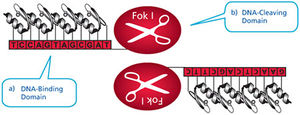Anellovirus: Difference between revisions
| Line 30: | Line 30: | ||
==Correlation with outcomes in pediatric lung transplantation== | ==Correlation with outcomes in pediatric lung transplantation== | ||
<br>Recent research suggests that anellovirus loads could be used as a predictor of transplant outcomes. High levels of anellovirus are associated with immune suppression, while low levels are correlated with immunocompetence. It had previously been found that lung transplant patients had increased anellovirus levels in their bronchoalveolar fluid and in their serum. Additionally, low plasma anellovirus loads have been found to be associated with acute rejection in heart transplant recipients. This makes anelloviruses a potential marker of chronic rejection, as low plasma anellovirus levels may suggest later rejection.<br> | <br>Recent research suggests that anellovirus loads could be used as a predictor of transplant outcomes. High levels of anellovirus are associated with immune suppression, while low levels are correlated with immunocompetence. It had previously been found that lung transplant patients had increased anellovirus levels in their bronchoalveolar fluid and in their serum. Additionally, low plasma anellovirus loads have been found to be associated with acute rejection in heart transplant recipients. This makes anelloviruses a potential marker of chronic rejection, as low plasma anellovirus levels may suggest later rejection.<br> | ||
<br> Blatter et al. investigated the impact of both alphatorqueviruses and betatorqueviruses on the outcome of lung transplants in a pediatric cohort of 57 children. They hypothesized that high levels of anellovirus in the blood would be associated with lower levels of rejection and an overall better outcome. Additionally, they predicted that different genera of anellovirus might be associated with different outcomes, as previous research found that alphatorqueviruses correlated with fever in children but betatorqueviruses did not. <br> | |||
==Conclusion== | ==Conclusion== | ||
Revision as of 22:29, 30 March 2018
Introduction
At right is a sample image insertion. It works for any image uploaded anywhere to MicrobeWiki. The insertion code consists of:
Double brackets: [[
Filename: Anellotree.jpg
Thumbnail status: |thumb|
Pixel size: |300px|
Placement on page: |right|
Legend/credit: Electron micrograph of the Ebola Zaire virus. This was the first photo ever taken of the virus, on 10/13/1976. By Dr. F.A. Murphy, now at U.C. Davis, then at the CDC.
Closed double brackets: ]]
Other examples:
Bold
Italic
Subscript: H2O
Superscript: Fe3+
Overview
Anelloviruses are small circular single stranded DNA viruses found in blood plasma. While they are not known to cause any harm, high viral loads are associated with immune suppression and diseases such as hepatitis, cancer, and autoimmune diseases (Blatter et al.).The first anellovirus discovered was torque teno virus (TTV) in 1997, and since then it has been found that these viruses are relatively widespread and heterogenous (Spandole et al.). Within the family Anelloviridae there are three known genera: Alphatorquevirus, Betatorquevirus, and Gammatorquevirus. Alphatorquevirus includes TTV, while Betatorquevirus includes torque teno mini virus and Gammatorquevirus includes torque teno midi virus. Anelloviruses that infect animals have also been found in cats, dogs, and even pigs.
TTVs are unenveloped viruses that have a capsid made of 12 pentameric capsomers. Virion particle sizes range from 30 to 50 nm for TTV, but are less than 30 nm for torque teno mini virus (TTMV). The crystal structure of TTV has not been solved and these viruses cannot be grown in vitro due to lack of compatible cell systems.
Genome
The Anellovirus genome is made of a circular single stranded DNA molecule that has a GC rich region of 117 nucleotides. Genome size varies, but the TTV genome ranges from 3.6 to 3.9 kb. Of this, there is a .2 kb untranslated region and a 2.6 kb coding region. The untranslated region has been highly conserved, suggesting that it likely plays a role in viral replication. Interestingly, the coding region has two large open reading frames, the first of which encodes 770 amino acid residues and another that encodes large peptides in TTV. The genome of Anellovirus is very heterogenous, with high divergence. Different genotypes can infect the same host at the same time, even within the same tissue. Researchers hypothesize that this may be due to a high mutation rate in TTV, which is uncommon for DNA viruses, which use the host's own replicative machinery, which is much less error prone. However, research in single stranded DNA viruses such as parvoviruses has found that the single stranded nature of the genome and its ability to encode replication proteins may account for high rates of mutation. Thus, this could explain the high rates of mutation in Anelloviruses.
Recently, it has also been proposed that intra-genomic recombination could account for the heterogeneity of the Anellovirus genome. It has been suggested that TTV has co-evolved with the host for over millions of years, allowing for great variability.
Correlation with outcomes in pediatric lung transplantation
Recent research suggests that anellovirus loads could be used as a predictor of transplant outcomes. High levels of anellovirus are associated with immune suppression, while low levels are correlated with immunocompetence. It had previously been found that lung transplant patients had increased anellovirus levels in their bronchoalveolar fluid and in their serum. Additionally, low plasma anellovirus loads have been found to be associated with acute rejection in heart transplant recipients. This makes anelloviruses a potential marker of chronic rejection, as low plasma anellovirus levels may suggest later rejection.
Blatter et al. investigated the impact of both alphatorqueviruses and betatorqueviruses on the outcome of lung transplants in a pediatric cohort of 57 children. They hypothesized that high levels of anellovirus in the blood would be associated with lower levels of rejection and an overall better outcome. Additionally, they predicted that different genera of anellovirus might be associated with different outcomes, as previous research found that alphatorqueviruses correlated with fever in children but betatorqueviruses did not.
Conclusion
Overall paper length should be 3,000 words, with at least 3 figures.
References
Edited by Julia Josowitz of Joan Slonczewski for BIOL 238 Microbiology, 2018, Kenyon College.

